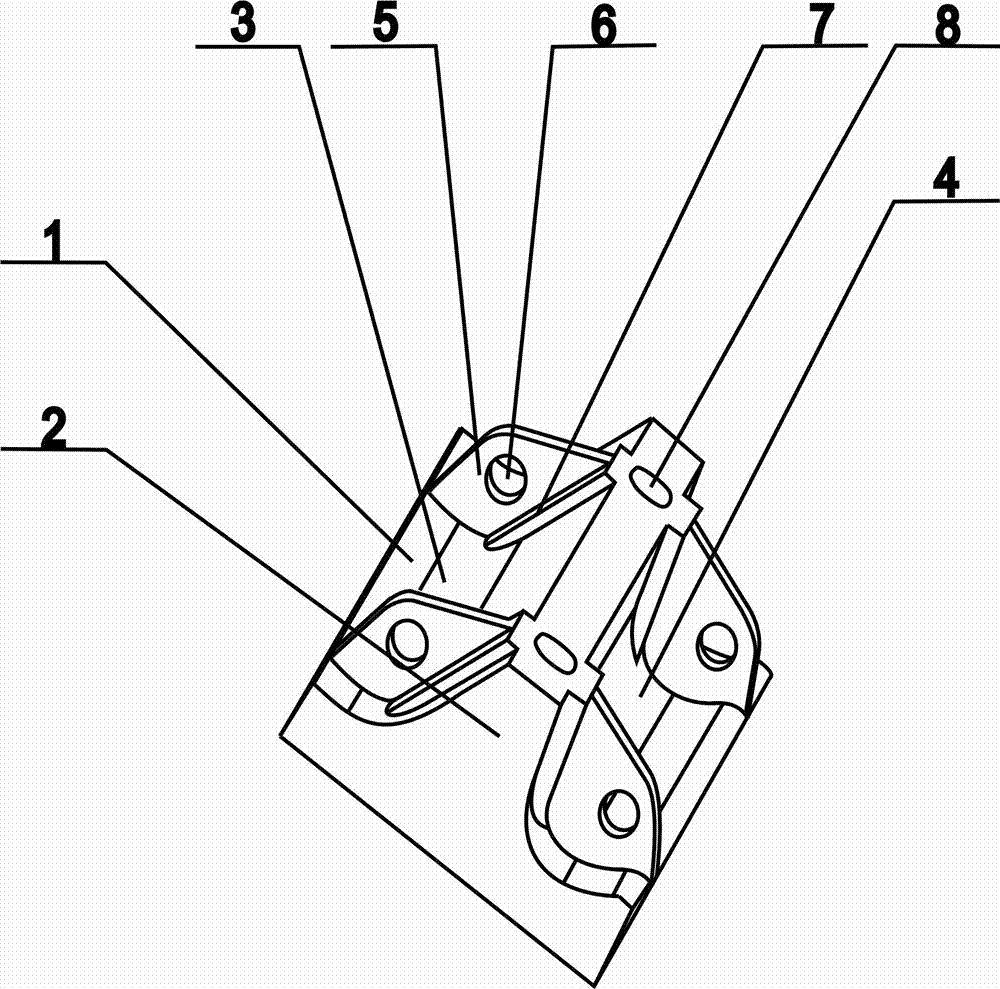Wear-resistant liner with asymmetrical lifting strip for semi-autogenous mill
A technology of semi-autogenous mills and wear-resistant linings, applied in grain processing, etc., can solve the problems of increasing the production cost of symmetrical cylinder linings, reducing the amount of material filling in the mill, and reducing the working efficiency of the mill, etc., to achieve Simple structure, improved grinding efficiency, convenient and efficient use
- Summary
- Abstract
- Description
- Claims
- Application Information
AI Technical Summary
Problems solved by technology
Method used
Image
Examples
Embodiment 1
[0032] The surface connecting the lifting strip 2 with the left liner body 1 is the spherical surface 3, and the angle between the spherical surface 3 and the liner body 1 is 45°; the surface connected with the lifting strip 2 and the right liner body 1 is the back spherical surface 4. The included angle between the back spherical surface 4 and the liner body 1 is 60°, and the joints between the front spherical surface 3 and the back spherical surface 4 and the liner body are rounded transitions.
Embodiment 2
[0034] The surface connecting the lifting strip 2 with the left liner body 1 is the spherical surface 3, and the angle between the spherical surface 3 and the liner body 1 is 50°; the surface connected with the lifting strip 2 and the right liner body 1 is the back spherical surface 4. The included angle between the back spherical surface 4 and the liner body 1 is 70°, and the joints between the front spherical surface 3 and the back spherical surface 4 and the liner body are rounded transitions.
Embodiment 3
[0036] The surface connecting the lifting strip 2 with the left liner body 1 is the spherical surface 3, and the angle between the spherical surface 3 and the liner body 1 is 60°; the surface connected with the lifting strip 2 and the right liner body 1 is the back spherical surface 4. The included angle between the back spherical surface 4 and the liner body 1 is 80°, and the connection between the front spherical surface 3 and the back spherical surface 4 and the liner body is a round transition.
PUM
 Login to View More
Login to View More Abstract
Description
Claims
Application Information
 Login to View More
Login to View More - R&D
- Intellectual Property
- Life Sciences
- Materials
- Tech Scout
- Unparalleled Data Quality
- Higher Quality Content
- 60% Fewer Hallucinations
Browse by: Latest US Patents, China's latest patents, Technical Efficacy Thesaurus, Application Domain, Technology Topic, Popular Technical Reports.
© 2025 PatSnap. All rights reserved.Legal|Privacy policy|Modern Slavery Act Transparency Statement|Sitemap|About US| Contact US: help@patsnap.com

